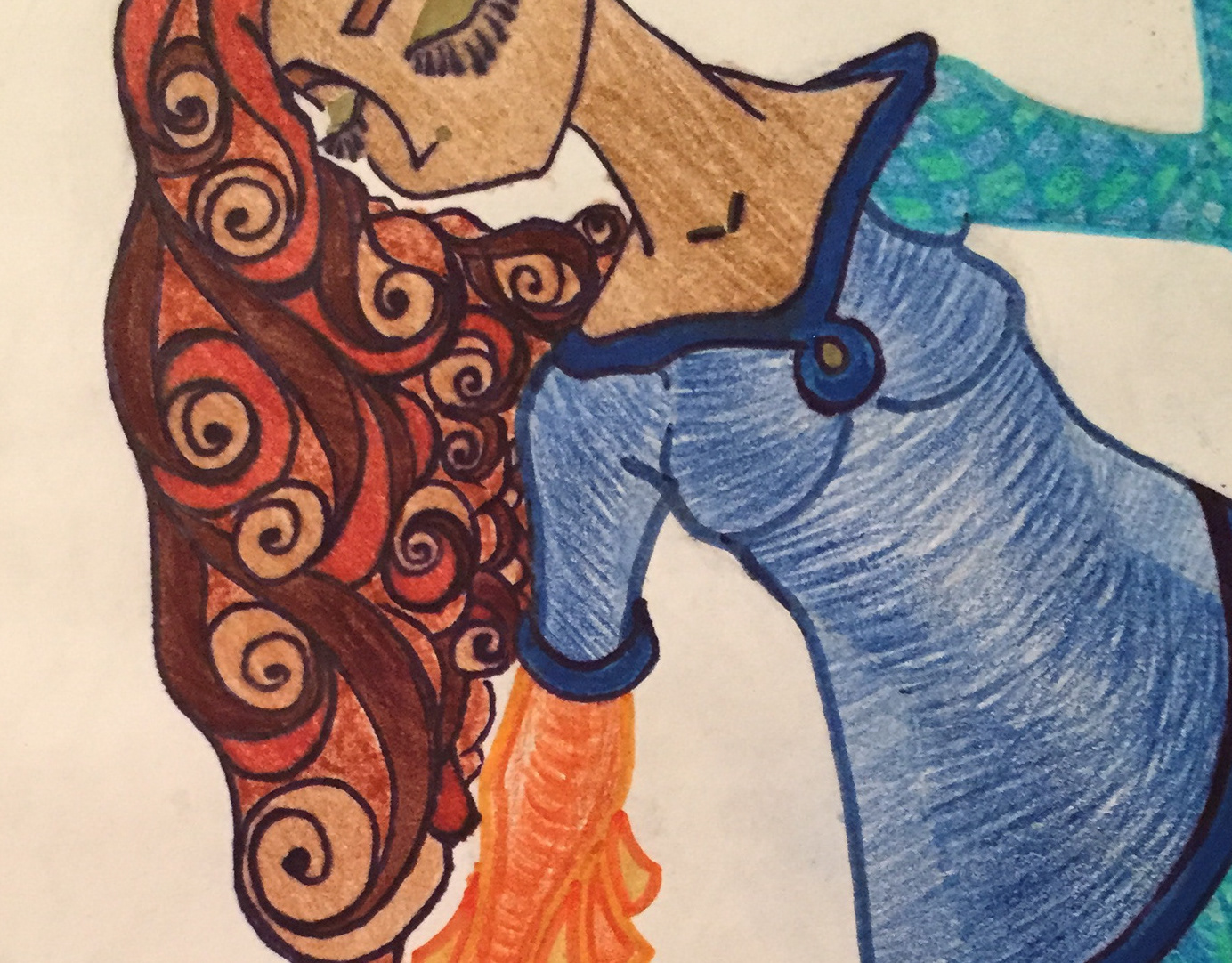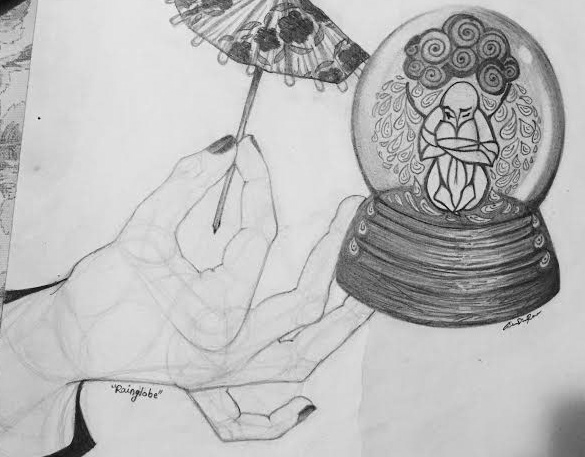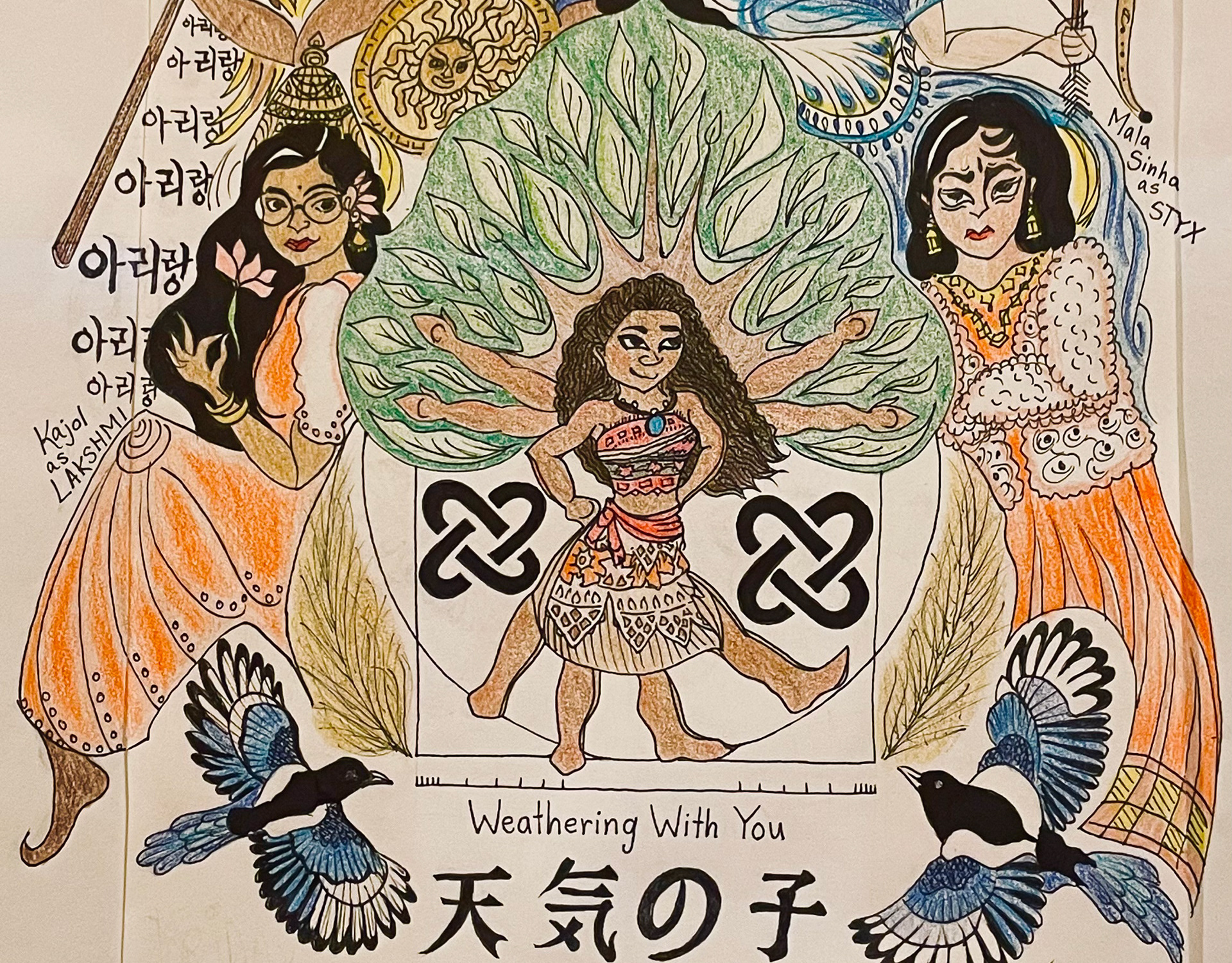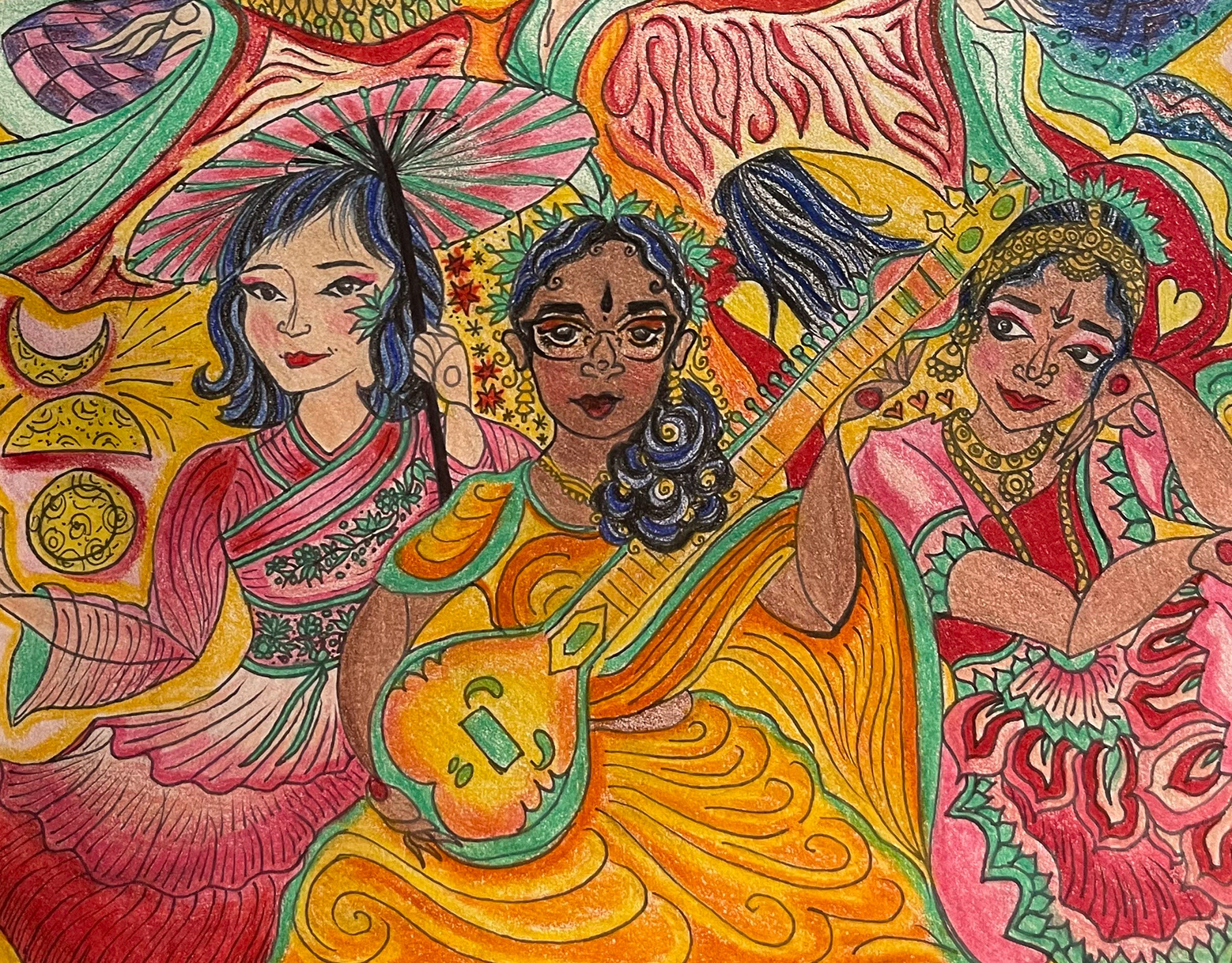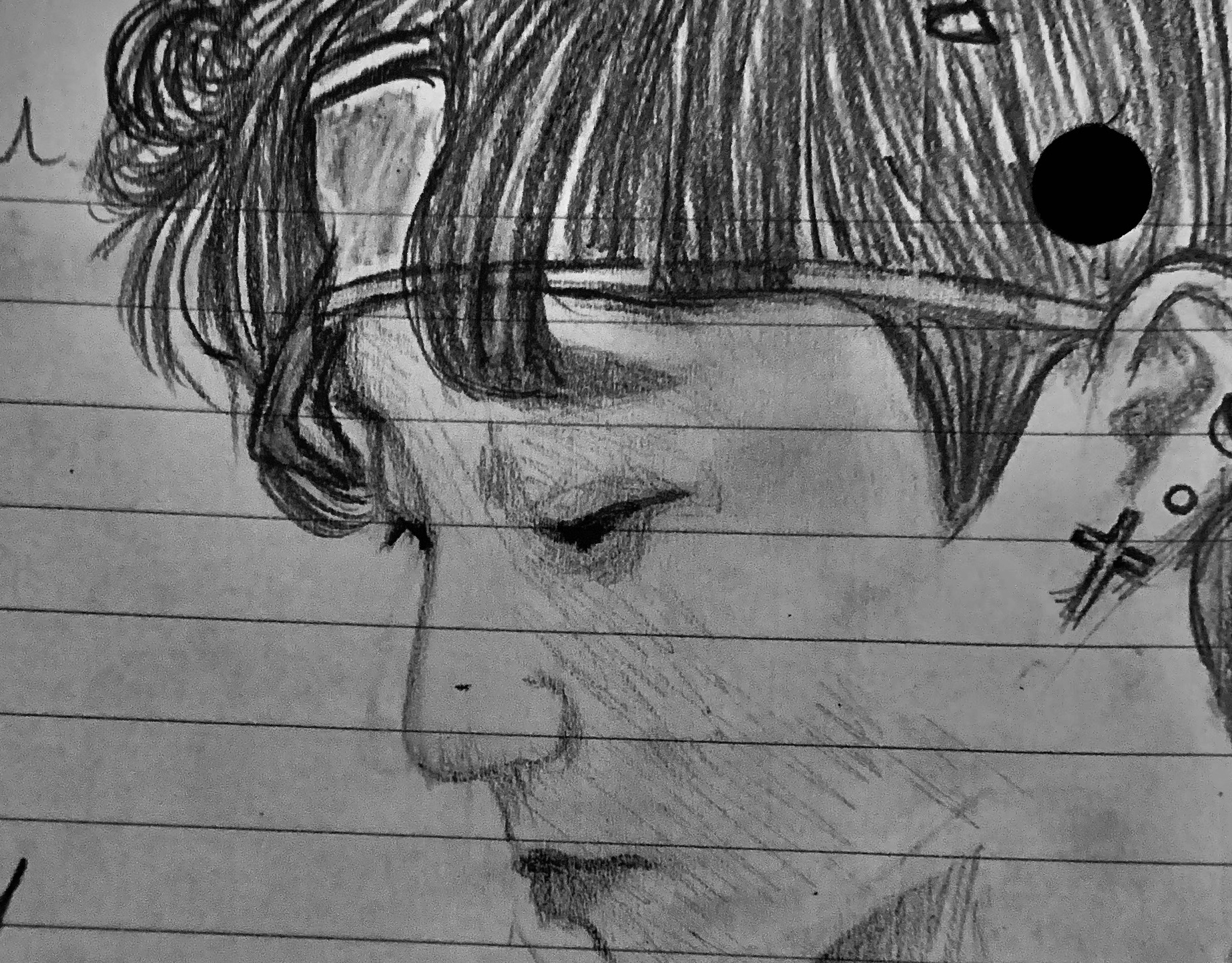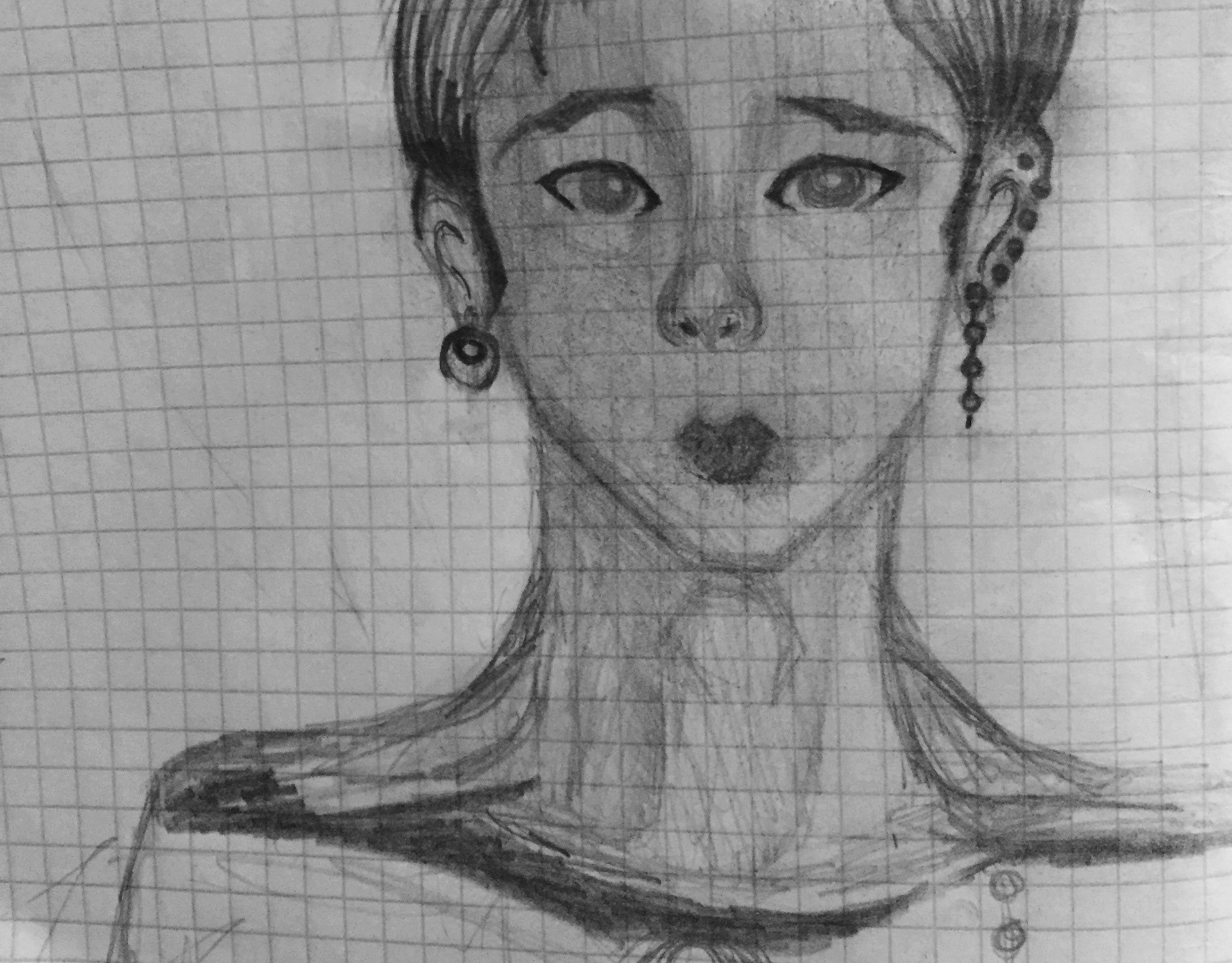“Flute Choir: Spring Concert" (2023)
Drawn with ink and colored pencil. Goal of the design was to showcase multi-cultural unity between symbolic figures from historic art, music, mythology, and film- this aligned with the showcase theme of bringing diverse music to the flute choir group. (From center to outward layers) Moana, a Polynesian princess from Disney's film "Moana" stands center, since "How Far I'll Go" was being performed. She poses with with two extra sets of limbs, at the center of a square and circle, with a line and short marks, all drawn in a nod to the famous "Vitruvian Man" drawing by Italian artist Leonardo da Vinci, to represent human anatomy. Her arms make up the branches and her legs make up the roots of a tree, representing nature. So, this combination was meant to show Human + Nature = Human Nature, since "Human Nature" by Michael Jackson was being performed. On her right and left, there is a symbol of "Unity" or "Umoja" from the seven principles of the African holiday of Kwanza, since "Umoja," composed by Valerie Coleman, was being performed. Excerpts from the OST of a Japanese animated film, "Weathering With You" were being performed, so the title was written in English and Japanese at the bottom, while a character (wearing a red bow and yellow boots) was drawn at the top of the page. Three Korean folk songs were represented: "Blue Bird" was shown in two Korean blue birds, which carry special symbolism; "Gold Grass" was shown in two bunches of the plant on either side of Moana's tree; and the word "Arirang," from the Korean patriotic song of the same name, was written on the left side. 1. "Mala Sinha as STYX" represents the sullen character played by the actress Mala Sinha in the 1963 Hindi film "Gumrah." "Tujhko Mera Pyaar Pukaare" from that film was performed, alongside Thomas Whitman's "Styx: Goddess of the River Styx and Personification of Hatred." 2. "Jaya Bhaduri as ARTEMIS" represents the heartbroken character played by the actress Jaya Bhaduri in the 1973 Hindi film "Abhimaan." Her song, "Tere Mere Milan" was performed alongside Thomas Whitman's "Artemis: Goddess of the Hunt." The Greek goddess thus has a bow, arrow, and quiver, while wearing a sari. 3. "Bhagyashree as ATHENA" represents the actress Bhagyashree in the 1989 Hindi film "Maine Pyar Kiya." The song "Dil Deewana" was performed alongside Thomas Whitman's "Athena: Goddess of Wisdom." Hence, she wears the costume of her character along with the helmet, spear, Medusa shield, and owl symbol of the Greek goddess Athena. 4. "Kajol as LAKSHMI" represents the lovestruck character played by the actress Kajol from 1995 Hindi cult film "DDLJ." Her song, "Tujhe Dekha Toh" was performed alongside "Flower Duet" from the French musical "Lakmé." Since "Lakmé" is the French word for "Lakshmi," the Hindu goddess of beauty and wealth, Kajol is dressed in the clothes of her character along with the lotus and ornaments of Lakshmi. Hence, the cultures that are featured in this piece include: Polynesian, African, American, Italian, Japanese, Korean, Greek, Indian, and French.

